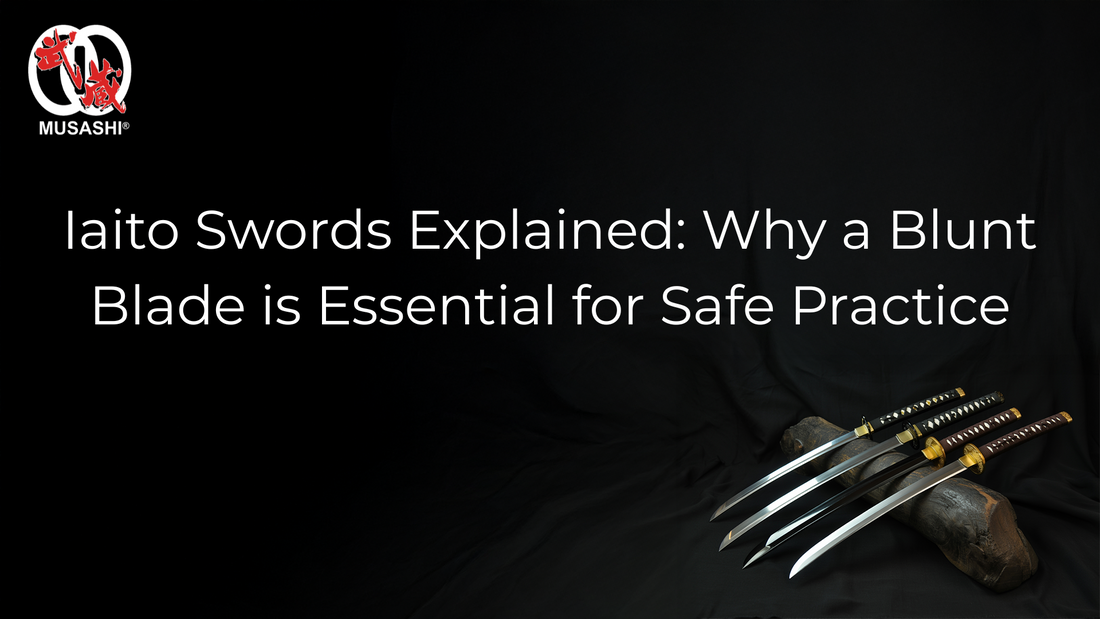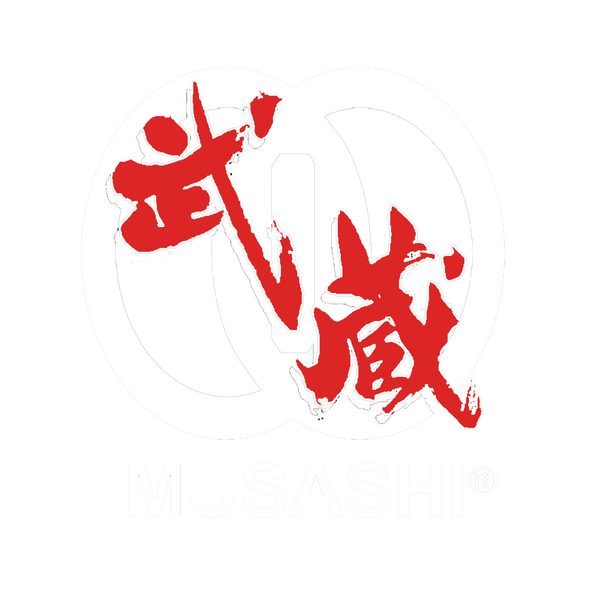
Understanding Iaito Swords - A Safe Approach to Iaido Practice
Iaito swords—such as those available in our iaido practice swords collection—are crafted specifically for safe and effective training in the art of Iaido. Unlike real swords, iaito are blunt training blades. They are often made from aluminum-zinc alloy. This keeps them safe to use while you practice your moves.
What is an Iaito?
An iaito is a practice katana sword. It looks and feels like a real sword but has a blunt edge. This lets students train without worrying about cuts or injuries.
Why is a Blunt Blade Essential?
Using blunt blades matters because:
- It keeps training safe by removing sharp points.
- You can focus on getting your technique right.
- Training stays controlled and injury risks drop.
Iaito Construction and Materials
Iaito swords usually use aluminum-zinc alloy or other types of alloy steel. These materials make the sword strong but light. They also give it the feel of a traditional Japanese sword.
The Significance of the Blunt Blade in Iaito - Safety First
Safety comes first when you practice Iaido. Using safe practice swords lowers the chance of getting hurt during training.
Minimizing Risk of Injury
Blunt-edged swords cut down risks a lot. Without sharp edges, you can drill moves hard and still be safe. That makes these swords good for both beginners and experts.
Focus on Technique, Not Cutting
No sharp edge means no worries about cuts. So students can put all their effort into learning controlled, precise movements. This helps them get better at every kata they do.
Accessibility for Wider Audience
Iaito are popular because they work for all skill levels. Beginners can learn basics safely, while skilled martial artists use them to practice more complex techniques. That's why they're used so much everywhere!
Iaido - The Art of Drawing and Sheathing the Katana
Iaido is more than just moving with a sword; it's tied deeply to samurai culture and tradition that still matters today.
Historical Context of Iaido
Iaido comes from samurai heritage. It holds strong historical meaning passed down through many generations in Japan, showing honor and skill with the sword.
Modern Iaido Practice and Its Benefits
Training in Iaido brings many benefits beyond fighting:
- Personal development builds self-discipline.
- Mental harmony helps calm the mind.
- Physical coordination improves body control during moves.
These benefits support growth for those who keep practicing this art sincerely.
Key Principles Of Iaido
Iaido relies on some simple ideas:
- Discipline teaches respect for yourself and others.
- Focus helps clear distractions.
- Calmness builds patience during tough moments.
Knowing these principles helps explain why using an iaito sword matters so much in this tradition and how they fit perfectly together at places like Musashi Swords!
Iaito Construction and Comparison to Sharp Swords
Iaito Construction: Materials and Craftsmanship
Iaito swords usually use an aluminum-zinc alloy for their blades. This zinc-aluminum alloy keeps the sword light but still tough enough for practice. Real katana blades are made from steel, forged with traditional methods that take time and skill. But iaito blades don't have sharp edges. They still look like real swords, though.
Craftsmen cast iaito blades carefully. Then, they hand-finish them to copy the curve, polish, and balance of a real katana. The handle often uses a synthetic material that lasts long and feels good in your hand.
This mix of materials gives iaito swords the same kind of balance and weight as sharp swords. But because their edges aren't sharp, they are much safer to use for training.
Handle (Tsuka) and Fittings (Tsuka-ito, Menuki, etc.)
The tsuka is the sword's handle. It's wrapped tightly with tsuka-ito, a special cord that helps you keep your grip during practice. The sword fittings include parts like menuki—those little decorations you can feel—and others like fuchi and kashira.
These pieces make the sword look authentic and feel right in your hand. Inside the wrapping is a synthetic core that resists wear. This means the handle stays solid even after lots of use.
Saya (Scabbard) Materials and Construction
The saya is the scabbard or sheath that holds the sword blade. Most iaito saya are made from light wood covered in lacquer or sometimes from tough synthetic stuff.
A good saya has a smooth inside so the blade slides in and out easily without getting scratched. This is key for people who do kata or demonstrations where they draw their swords many times.
Iaito vs. Shinken - Key Differences and Considerations
- Blade edge: Iaito blades are blunt; shinken are sharp.
- Materials: Iaito use aluminum-zinc alloy; shinken use high-carbon steel.
- Use: Iaito are for safe training only; shinken cut targets or display.
- Weight & balance: Both aim for realistic feel but differ due to materials.
Knowing these helps you pick what fits your skill level and training needs.
Sharp vs. Blunt - The Fundamental Difference
- Blunt swords like iaito focus on safety:
- No sharp points means less chance of cuts.
- Unsharpened edges let you swing fast without worry.
- These safe practice swords help beginners build skills confidently.
That's why blunt blades play a big role in martial arts schools everywhere.
Weight and Balance Comparisons
This match lets you move naturally while training.
Practical Implications for Training
- They stand up well to hits because of alloy build.
- Their blunt edges cut down injury risks.
- Realistic weight helps you form correct techniques.
They fit all levels—from beginners learning basics to those working on more advanced forms.
Choosing the Right Iaito: Size and Fit
Factors to Consider When Selecting an Iaito
Picking your ideal iaito means thinking beyond price:
- Choose blade length based on your height.
- Handle size should fit your hand well.
- Weight should feel right—not too heavy or too light.
A good fit makes practicing easier and stops you from getting tired too fast.
Finding the Right Size And Weight For Your Body Type
The blade length should match your body size—usually measured from fingertips past your hip when arm is stretched out.
Recommendations For Beginners And Advanced Practitioners
- For beginners:
- Pick lighter iaitos.
- Look for handles wrapped with good tsuka-ito so grip stays solid under pressure.
- For advanced users:
- Heavier models mimic real katana weight better.
- Good balance helps with tricky wrist moves and control.
Safety Precautions and Responsible Sword Ownership
Essential Safety Precautions for Iaito Practice
Iaito swords have blunt edges and no sharp points. This design cuts down the risk of injury a lot. They serve as safe practice swords perfect for martial arts safety. Always use proper sword handling techniques when you hold an Iaito. This helps keep control and stops accidents.
Wear protective gear like gloves or eye protection, especially during advanced moves or paired drills. Follow these sword safety measures:
- Practice in open spaces without obstacles or bystanders.
- Move the sword slowly and with control.
- Check your Iaito often for loose parts or damage.
Doing these things keeps your training safe and smooth.
First Aid and Emergency Procedures for Sword-Related Incidents
Injuries from blunt edged swords like Iaitos are rare but can happen. If someone gets hurt, here's what to do:
- Clean any cuts right away with antiseptic.
- Press on wounds if they bleed a lot.
- Cover wounds with sterile bandages afterward.
- Go see a doctor if the injury looks bad or gets infected.
If there's an emergency during training, stay calm and stop all action fast. Check the injured person's condition before calling medical help.
Keep training partner safety in mind by talking clearly before exercises start. Agree on how hard you'll train together to avoid accidents Being aware of others and following simple first aid steps creates a safer training spot for everyone involved.
Iaido Training Methods and Techniques
Beginner Iaido Techniques: Fundamental Movements and Safety Drills
When you start with iaido techniques, you learn the basic moves first. Sword safety is really important at this stage. Using safe practice swords like blunt blades or iaito swords helps prevent injuries. Practicing controlled movements teaches you how to be skilled without rushing.
Here's what beginners usually focus on:
- Using safe practice swords
- Wearing protective gear like gloves and eye protection
- Keeping mental harmony by staying calm and focused
- Learning to handle the sword with respect
Training sword safety means knowing how to hold and move the sword carefully all the time. This mix of safe gear, steady motions, and clear mind builds a good base for iaido.
Intermediate and Advanced Iaido Training - Kata and Suburi
After you get the basics down, kata in iaido take center stage. Kata are set forms that show fight moves step-by-step. They teach precise technique. Each move must be done carefully to keep the flow smooth and strong Suburi drills go well with kata. These drills focus on repeating cuts again and again. This helps build muscle memory and control over your blade. Practicing suburi improves your speed, strength, and posture.
Both kata and suburi need focused practice every time you train. This kind of disciplined training sharpens your technique as you get better at iaido.
The Role of the Bokken in Iaido Training
The wooden bokken plays a big role in iaido training. It's a wooden training sword used as part of martial arts equipment. Bokken let you practice sword moves safely because they don't have sharp edges.
Wooden training swords feel close to real katanas in weight but reduce injury risk during solo drills or sparring. You can work on strikes, blocks, footwork, and distance without worry.
This zinc-aluminum alloy offers good benefits:
- Light but tough enough for many practice moves
- Blunt edges reduce injury risk
- Resists rust better than steel blades
- Handles well for exact kata actions
Modern iaito designs blend old looks with new materials technology. These alloy construction swords let people train safely while keeping balance, grip feel, and shape close to real swords.
Maintaining Your Iaito - Care and Preservation
To ensure your iaito remains in top condition, be sure to follow our expert sword maintenance tips after every training session. After each use, wipe the blade with a dry soft cloth—no moisture or dirt allowed. Use special sword oil to stop rust; apply it lightly to the blade surface.
Look closely at the tang—the part where the blade joins the handle (called tsuka). Make sure the fittings stay tight; loose parts can be unsafe when you train.
Store your iaito in a dry place away from sun and moisture changes. This keeps steel and wood safe longer.
To sum up:
- Clean the blade after every use
- Oil it lightly to protect steel
- Inspect fittings regularly
- Keep it stored right
FAQs
What is the difference between an iaito and a katana?
An iaito has a blunt edge and is made from aluminum-zinc alloy. A katana has a sharp blade made of steel, forged by traditional methods. Iaito are for safe practice; katanas are for cutting.
Why choose an iaito over a shinken for training?
Iaito provide safety with their blunt edges. They offer similar weight and balance to shinken but reduce injury risk. This makes them ideal for precise swordsmanship training.
Are iaito swords durable enough for daily martial arts practice?
Yes, iaito blades use alloy construction that is lightweight yet tough. Their design supports frequent use during dojo training without damage.
Can beginners use an iaito sword safely?
Absolutely. Blunt edges and proper sword grip techniques make iaito perfect for beginners learning controlled movements and kata in Iaido.


